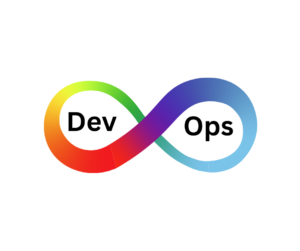Learn how to solve the “error ansible requires blocking io on stdin stdout stderr” with proven fixes for CI/CD, Jenkins, GitHub Actions, and SSH issues. Our DevOps Support Team is always here to help you.
Error Ansible Requires Blocking IO on Stdin Stdout Stderr Explained with Solutions
When the message error ansible requires blocking io on stdin stdout stderr shows up, it can throw a wrench into your workflow. This happens because Ansible depends on standard streams being in blocking mode. If they switch to non-blocking, Ansible cannot communicate properly with remote systems, breaking playbook execution.
Let’s look at what causes it and the exact ways to resolve it, as seen in this case

Why the Error Appears
The error message usually looks like this:
ERROR: Ansible requires blocking IO on stdin/stdout/stderr. Non-blocking file handles detected: <stream>Here, <stream> points to stdin, stdout, or stderr. The impacts can be serious—playbooks fail, output turns inconsistent, and automation pipelines in CI/CD collapse.
Common Causes and How to Handle Them
- Standard Streams in Non-Blocking Mode
This usually happens due to CI/CD pipelines or custom scripts (see this issue). The fix is to force blocking IO using cat –.
Do this:
ansible-galaxy install andrewrothstein.etcd-cluster | cat -This ensures the output stream resets to blocking mode, allowing Ansible to run smoothly.
- Jenkins Scripts and Repeated Playbook Execution
When playbooks are executed repeatedly in Jenkins, its handling of streams can create the problem. The best way forward is to use the Ansible plugin for Jenkins.
- Install the Ansible plugin from the Jenkins marketplace.
- Configure it with your playbook repository and inventory file.
- Run playbooks via the plugin to avoid the non-blocking IO issue altogether.
- GitHub Actions and Shell Script Execution
Sometimes GitHub Actions sets stdout to non-blocking. The workaround is similar to the earlier method: pipe Ansible commands to cat -.
For example, edit your script like this:
#!/bin/bash
ansible-galaxy install andrewrothstein.etcd-cluster | cat -This ensures blocking mode is maintained, so the playbooks execute correctly.
- SSH and File Descriptor Handling
In certain setups, SSH alters file descriptors in subprocesses. That can cause stdin, stdout, or stderr to move into non-blocking mode.
To address this:
- Check SSH configuration and related scripts.
- Confirm no script is setting the streams to non-blocking.
- Explicitly reset the streams to blocking mode when needed.
- Hanging Commands and Debugging Difficulties
Sometimes, commands hang and make it look like Ansible is stuck. In that case, use Ansible’s async feature or timeouts.
Here’s how you can do it:
- name: Example task with timeout
shell: long_running_command
async: 60 # Timeout after 60 seconds
poll: 5 # Check status every 5 secondsThis approach keeps tasks from hanging forever while still capturing results.
Prevention Tips
To avoid this error in the future:
- Confirm stdin, stdout, and stderr are always blocking before running Ansible.
- Use dedicated plugins in CI/CD tools like Jenkins for running playbooks.Apply strong error handling with ignore_errors, failed_when, and any_errors_fatal.
- Utilize blocks and rescue for graceful recovery and logging.
- Monitor command output using register, debug, and stdout_lines.
[If needed, Our team is available 24/7 for additional assistance.]
Conclusion
The error ansible requires blocking io on stdin stdout stderr doesn’t just disrupt tasks, it breaks automation pipelines at scale. The good news is the solutions are straightforward, from piping with cat – to using async execution. Once these fixes are in place, you’ll run Ansible playbooks without interruptions, whether in Jenkins, GitHub Actions, or through SSH.







0 Comments